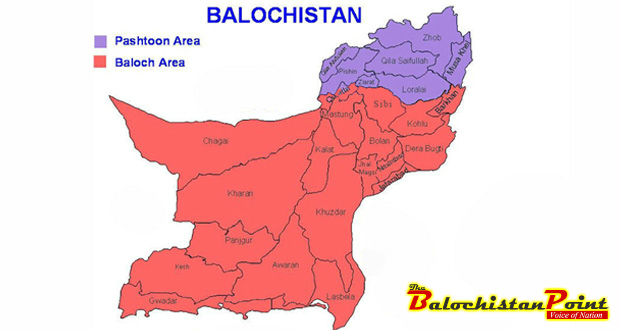By: Fazal Sherani
 District Sherani or Shirani is a district in Baluchistan province; it was separated from Zhob after granting the district status in 3 January 2006.The name of district originated from the dominant tribe of the area (SHERANI TRIBE).
District Sherani or Shirani is a district in Baluchistan province; it was separated from Zhob after granting the district status in 3 January 2006.The name of district originated from the dominant tribe of the area (SHERANI TRIBE).
District Sherani has only two tribes SHERANI and HARIFAL. According to the census of 1998 the total population was 8, 3771. Which included Harifal as 2, 6111 and Sherani with 5, 7660 population. District Sherani is entirely rural; there is no bazaar and towns in the district. Even still it is considered as the sub district of Zhob. Administratively Zhob has the position of being parent district of district Sherani.The district has only one Tehsil and is divided into 14 Union Councils for administrative purposes.
Geographically district Sherani has a boundary with South Waziristan on the north, Dera Ismail khan (DIK) on the east, on the southeast district Musakhail, Zhob district on the south and also bounded by Paktika Province of Afghanistan on the northwest. Historically in the north east of the Balochistan plateau, the Zhob and Sherani Basin forms an oval type shape which is surrounded on all sides by mountains (THE SULEIMAN MOUNTAINS). It is said that here the progenitor of Pushtoons QAIS ABDUL RASHID lived in Suleiman Mountains in (575-661 A.D).Natives call the place where he is buried “DA KAISA GHAR’’ (the mountain of Qais).In Pushto ‘’K’’is used for ‘’Q’’. Although the dominant language is PUSHTO spoken by 99.7% of the inhabitants of the district, District Sherani is not a developed; here people are still living under the shadow of old cultures.
The level of development can be well imagining from the fact that there is not a single inch of metaled road in the entire Harifal area. The tribal loyalty matter than everything else, People are limited to their specific clans, minds are limited, people are unidirectional, and here extremism exists but not religion. Here blood speaks words always but minds are conservative.
Tribal and clans head person (MALAKs) have the power but less than religious leaders. Here exactly feudal system of 9th and 15th century exists and is very wonderful while they are living in the 21st century under the modern democratic system of Pakistan. In the district the typical mountain Eco-system, the only way to agriculture is rain fed agriculture, the natural Dry Temperate forests of chilghoza Pine and Sub Tropical Broad-leaved Evergreen Scrub forests of Olive and Phulai, which occupies large areas in the district. The natives are also depended upon these forests for fulfilling their requirements of fuel wood and small timber.
According to the ‘district development Profile’ children in the district work at motor workshops, tailoring shops, carpentry, cooking and bicycle repair shops, hotels, shops. They sell fruits and vegetables in the markets, the economy of district communities are completely depended on Zhob city. The male and female children usually help their families in fodder cutting, collection of wood and bushes. Whereas girls are exclusively engaged in household activities, water fetching, cleaning the house and doing embroidery work. Main-reasons for child labor are poverty and lack of access to education. Even if they are enrolled in schools, they are eventually taken out so they may contribute to household activities.
District Sherani holds a unique position in terms of dead infrastructure and opportunities. Having not a single branch of any bank, no district hospitals. Only have three health clinics and eight civil dispensaries, one in the Harifal area and seven in the Sherani area. There is no female doctor, no dentist, no nurse and no midwife in the whole of the district.
However, quality education in district Sherani is a far behind approach. Despite the fact quality education the district have a complete religious outlook. The running institutions have a very inactive, unqualified and completely unaware teaching staff for secular education. It is not surprising, given that there is only one intermediate college in the entire district. Although there are four high schools but located in the Sherani area, none in Harifal. Similarly, only eight middle standard boys’ schools with 263 enrolled students and 102 teachers exist in the whole district, even the district having none of middle or high schools for girls. The female literacy rate not more than 3%.Let’s guess 97% of female population remain without education in the Sherani country. Furthermore, as male literacy rate reported by NCHD is about 18%.But everyone knows that 82% of the male population does not know even their names. Reportedly 76 schools are working with one teacher and one room without shelter.83% of schools are without electricity, 45% are without a boundary wall, 50% are without a toilet, and 35% are without drinking water even.
Writer is studying Bs political science at Quaid-e-Azam University Islamabad.
Published in The Balochistan Point on March 19, 2017
 Balochistan Point Voice of Nation
Balochistan Point Voice of Nation




